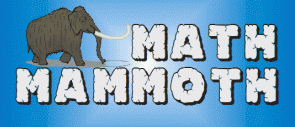
What do a donkey, a caterpillar, an eagle, a frog, and a gorilla have in common? They're all characters that your child will meet as he learns to play the piano online with KinderBach...no reading necessary!
Karri Gregor has created KinderBach for ages 2-7 as an introduction to playing the piano. The online course is broken down into two years: Levels 1-3 for year one (30 weeks total) and Levels 4-6 for year two (also 30 weeks). Each Level is divided into 10 weeks, and each week has an Introduction video and four different lessons. The introduction lets you know what skills will be learned that week and the supplies needed (scissors, paste, rhythm instrument, etc). The individual lessons vary in length, but they seem to be around 5 minutes long give or take a minute or so. Print outs for each lesson are provided in PDF format. While having a real piano would be nice, a small and inexpensive keyboard works just fine with this program.
My final verdict: My five-year-old daughter went through the entire first year, Levels 1-3. She was able to comfortably complete an entire week's worth of lessons in one sitting, taking about 30 minutes from start to finish. She enjoyed the variety of activities that she got to do: coloring, cutting, pasting, listening exercises, counting, matching, using rhythm instruments and playing the keyboard. KinderBach teaches children to find keys on the keyboard by associating different characters (whose names begin with the same letter as the key) with them. This made it fun and easy for my daughter to memorize the location of the white keys. In Levels 1-3 she learned the following, as taken right from KinderBach's website:
Level 1
- - Familiarity with the black and white keyboard landscape.
- - Aural discrimination of high and low sounds as well as loud and quiet.
- - Music term “Piano” means quiet or soft.
- - Quarter note, half note and the beat value of these symbols in common time.
- - Keeping the beat with rhythm instruments and on the piano.
- - Distinguishing left and right hands.
- - Finger numbers for playing keyboard.
- - Introduction to songs that will be used for Kodaly Solfege.
- - Introduction to pre-Staff note reading by patterns.
Level 2
- - Review all concepts from Level 1
- - Characters for C, D, & E and their location on the keyboard.
- - Emphasize relationship of the character to their letter name.
- - Play simple songs with these notes.
- - Aural discrimination of high, middle, and low sounds.
- - Music terms “Piano” and “Forte”.
- - Identify simple rhythms.
- - Introduction of two Solfege terms.
- - Play pre-Staff note patterns on the keyboard.
Level 3
- - Review all previous concepts.
- - Add characters for F & G and their location on the keyboard.
- - Emphasize relationship of the character to their letter name.
- - Play simple songs with these notes.
- - Aural discrimination for music direction.
- - Eighth notes and their beat value in common time.
- - Addition to Solfege terms.
- - Proper hand and finger position at the piano.
- - Addition to pre-Staff note patterns and playing them on the keyboard.
- - Identify pre-Staff note patterns by ear.
- - Clap back simple rhythms.
I sat in on all of her lessons, and she really did learn all that is listed in the syllabus. My daughter's favorite part, and the most rewarding for all piano students everywhere, is when she learned new songs and could play them all on her own. Whenever we come across a piano or keyboard in a store or friend's home now she immediately plays what she knows. How cool! It was convenient not to have to leave the house to go to a lesson. I could replay any part of the lesson we wanted, either to go back over a concept or to practice a piece of music with Karri. I was able to pause the instruction while my daughter colored as part of the lesson so that she didn't miss anything. My only concern, because I have taken traditional piano lessons in my past, is the concept of timing not being a focus. The references to beat are just a bit confusing (strong, medium, and weak beats?) . It was emphasized to me that music is all about timing. I guess I am just wondering whether it will be a rude awakening for my daughter once she takes more advanced lessons. Overall, though, I think KinderBach is a great program! It's economical, convenient, fun for the kids, and the learning comes easy in the format in which it's presented. Karri has a great on-screen personality that my daughter really enjoyed. You can try out the first two weeks absolutely FREE! See KinderBach's website for a lot more information on the program and pricing options.
 Brought to you by the creator of All About Spelling (see review of AAS here), Marie Rippel has now published All About Homophones. This 240-page workbook takes children (suggested grades 1st-8th) through fun activities while they learn and test their knowledge of common homophones--words that sound alike but are spelled differently and have different meanings. For the teacher the book provides worksheets of different kinds of graphic organizers, a list of suggested children's books that are helpful in learning homophones (great idea!), answer keys, and a master list of homophones used in the book as well as a long list of others. For the student there are fun fill-in-the-blank worksheets, ready-to-print-on-cardstock card games, crossword puzzles, riddles, puns, and tongue twisters. Also provided is a simple worksheet where the student can record the homophones they have learned in one list.
Brought to you by the creator of All About Spelling (see review of AAS here), Marie Rippel has now published All About Homophones. This 240-page workbook takes children (suggested grades 1st-8th) through fun activities while they learn and test their knowledge of common homophones--words that sound alike but are spelled differently and have different meanings. For the teacher the book provides worksheets of different kinds of graphic organizers, a list of suggested children's books that are helpful in learning homophones (great idea!), answer keys, and a master list of homophones used in the book as well as a long list of others. For the student there are fun fill-in-the-blank worksheets, ready-to-print-on-cardstock card games, crossword puzzles, riddles, puns, and tongue twisters. Also provided is a simple worksheet where the student can record the homophones they have learned in one list.










